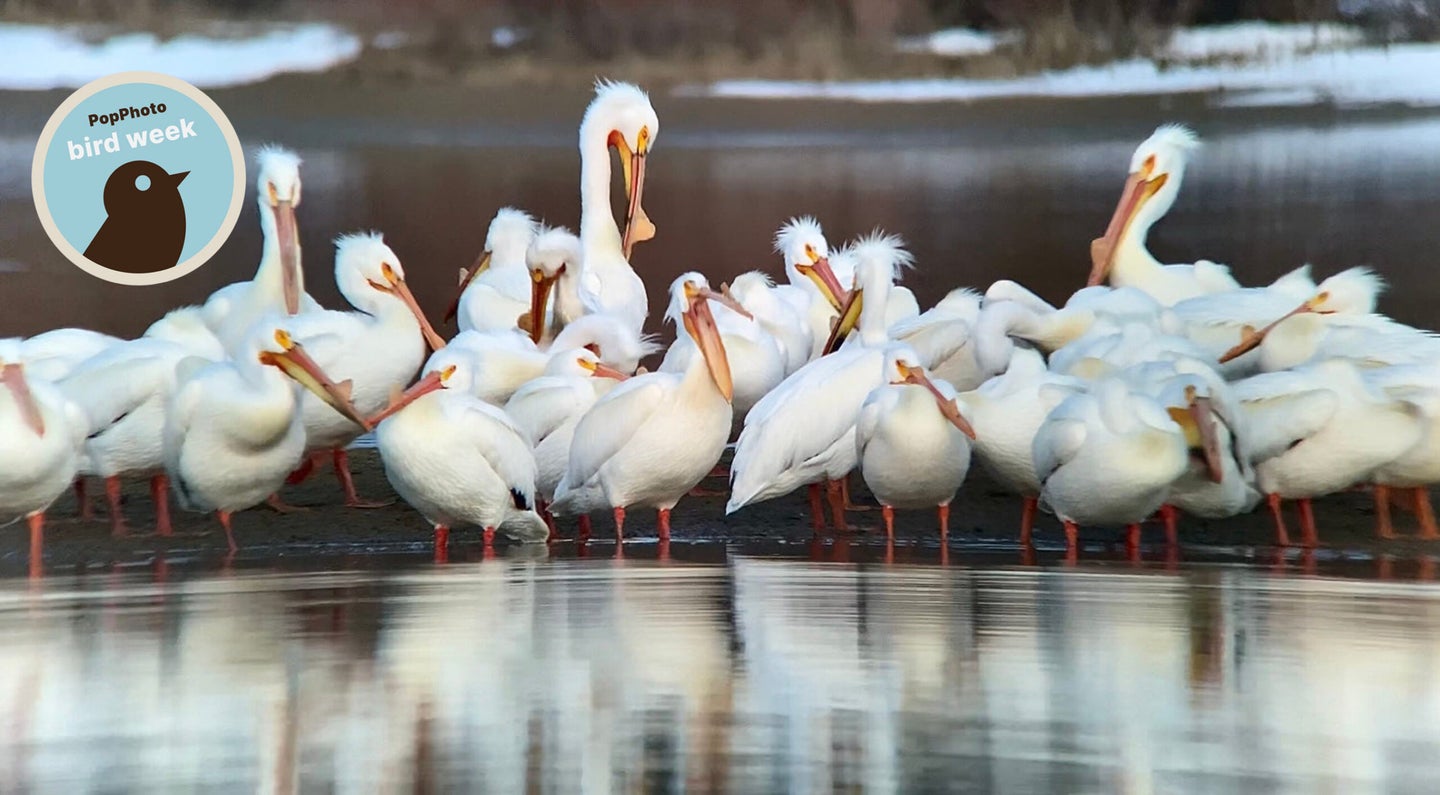
Bird photography is a fun but expensive hobby, as many enthusiasts will attest. A full-frame camera can easily run into the thousands and the telephoto lens? Well, depending on the range and maximum aperture you desire, it can be the cost of a small car. The Nikon Z 800mm f/6.3, for instance, retails for $6,500, while Sony’s 400mm f/2.8 clocks in at $12,000. Luckily, most of us have quite a capable camera in our back pocket that, along with a couple of accessories, can make wildlife photography more accessible.
PopPhoto spoke with Tyler Greenly about his tips for iPhone bird photography using a spotting scope (also known as a “digiscope”). Greenly has a degree in biology and specializes in ecology and evolutionary biology. After spending time working in research studying endangered birds, he now works in environmental education as a guide at Jackson Hole Eco Tours in Wyoming, where he educates the public about wildlife. In addition to birding, he picked up photography a few years ago and alternates between a camera and his smartphone and spotting scope setup.
Related: Best spotting scopes
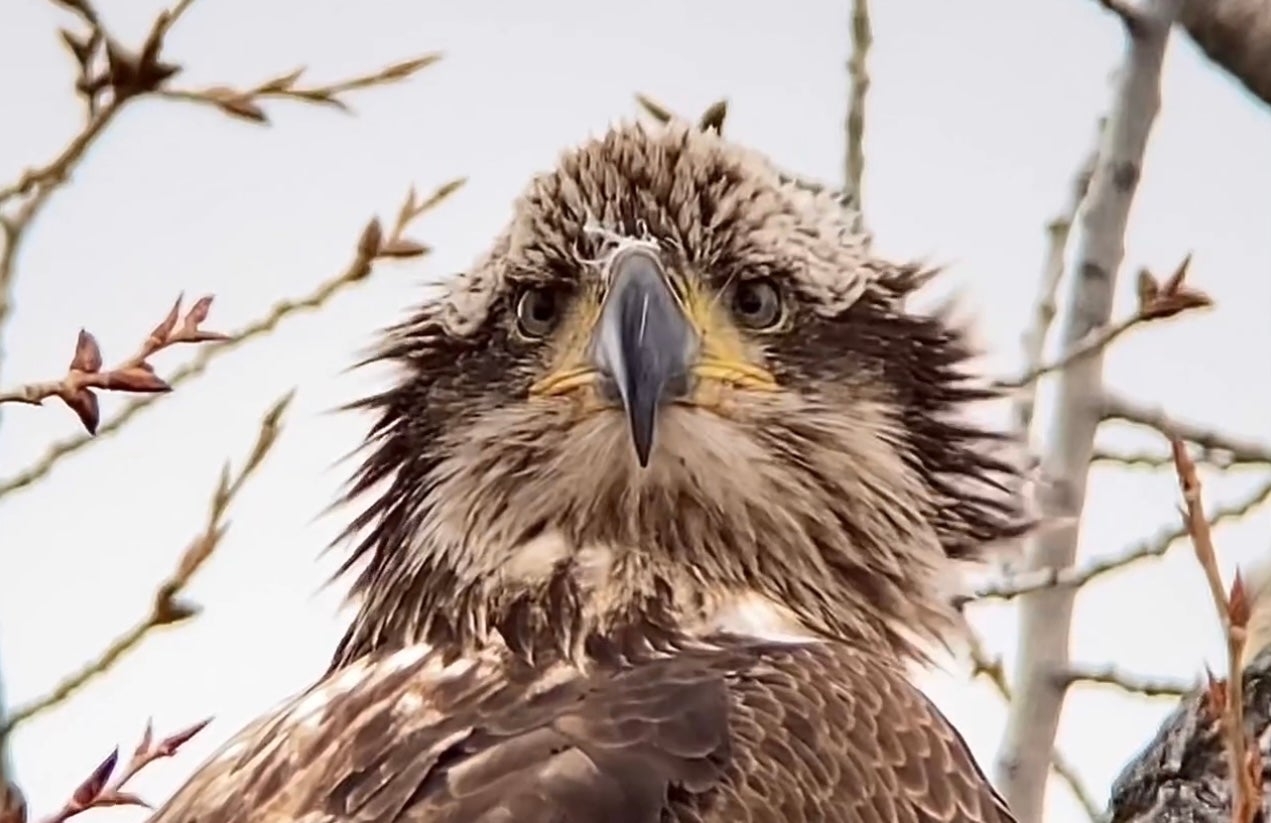
What are some things people should expect when photographing birds? Any beginner’s tips?
Be prepared for the birds to move quite a bit and be kind and patient with yourself. Birds are one of the hardest animals to photograph because they’re often small and they move around, they jump from branch to branch, they’re often flying in the sky, and they’re often far away. It can be really difficult to get those shots when starting out. I would say if you’re a beginner at digiscoping, practice on something that is standing still. If you’re in an area that has domestic animals, you can practice on horses, or practice on your dog. If you like wildflowers, go and practice aiming at wildflowers and work your way up to birds.
Have patience, let yourself learn, and go with the process. Also, discover your own style. A lot of people don’t think of photography as an art form, but it can totally be an art form, and people have different styles. Let yourself go, discover, and have an idea of what you want to capture. But if you don’t capture exactly what you’re looking for, that’s okay, too.
I feel like when I first started photography, I wanted my photos to look like everyone else’s photos. That held me back; I didn’t see the value in what I was capturing. Allowing yourself to learn and to discover the process on your own is really important. The biggest thing about this is just to enjoy filming and capturing birds, and also viewing them out wherever you are. In a park, or in the wilderness, just have fun and enjoy it.
Related: Best cameras for wildlife photography
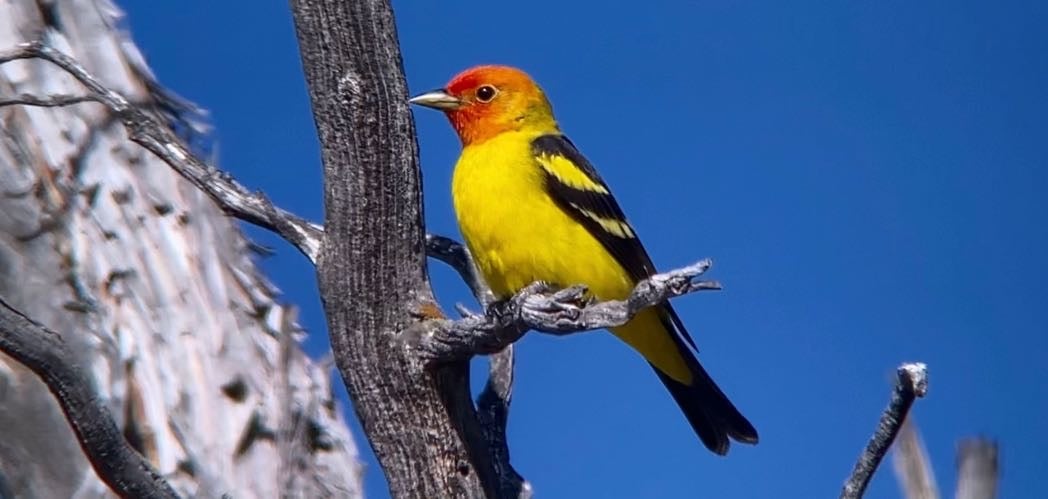
What settings do you recommend to maximize image quality on a smartphone?
I definitely shoot all of my videos and photos on the highest setting on the phone. (Editor’s note: You can adjust video quality in your phone’s camera settings—4k capture is often an option.) I was surprised at how clear the photos come out through the scope. Some of them are actually pretty incredible. I don’t think that you could blow them up and sell them, [but] they’re definitely good enough for social media, sharing with friends, and capturing memories for yourself. If you’re wanting to capture photos professionally, then I would recommend definitely getting a camera setup.
I don’t use the flash at all. What I do is I focus the phone, so if you press your phone’s touchscreen and hold it down, then a yellow square appears (the color of the box may vary depending on your phone model). That’s the phone locking its focus, and that will make it a lot easier to focus on an actual bird using your phone. From that point on, you can just use the scope to focus. That will help clear up a lot of the graininess. A lot of phones [have reliable] autofocus, which is great in most cases, but when there’s a bird moving through branches, it’ll autofocus on leaves and sticks and stuff like that, and you want to focus on the bird. So, using that locked focus is probably the best technique.
I take a lot of slow-mo footage. That will give you some really cool slow-motion shots of birds flying through the sky. I would recommend messing around with the settings because these phones are pretty incredible and you can do a lot with them. You can even download specific apps to get filters if you’re trying to go for a stylized shot. You can take a filtered black and white shot, for example, through the phone scope.
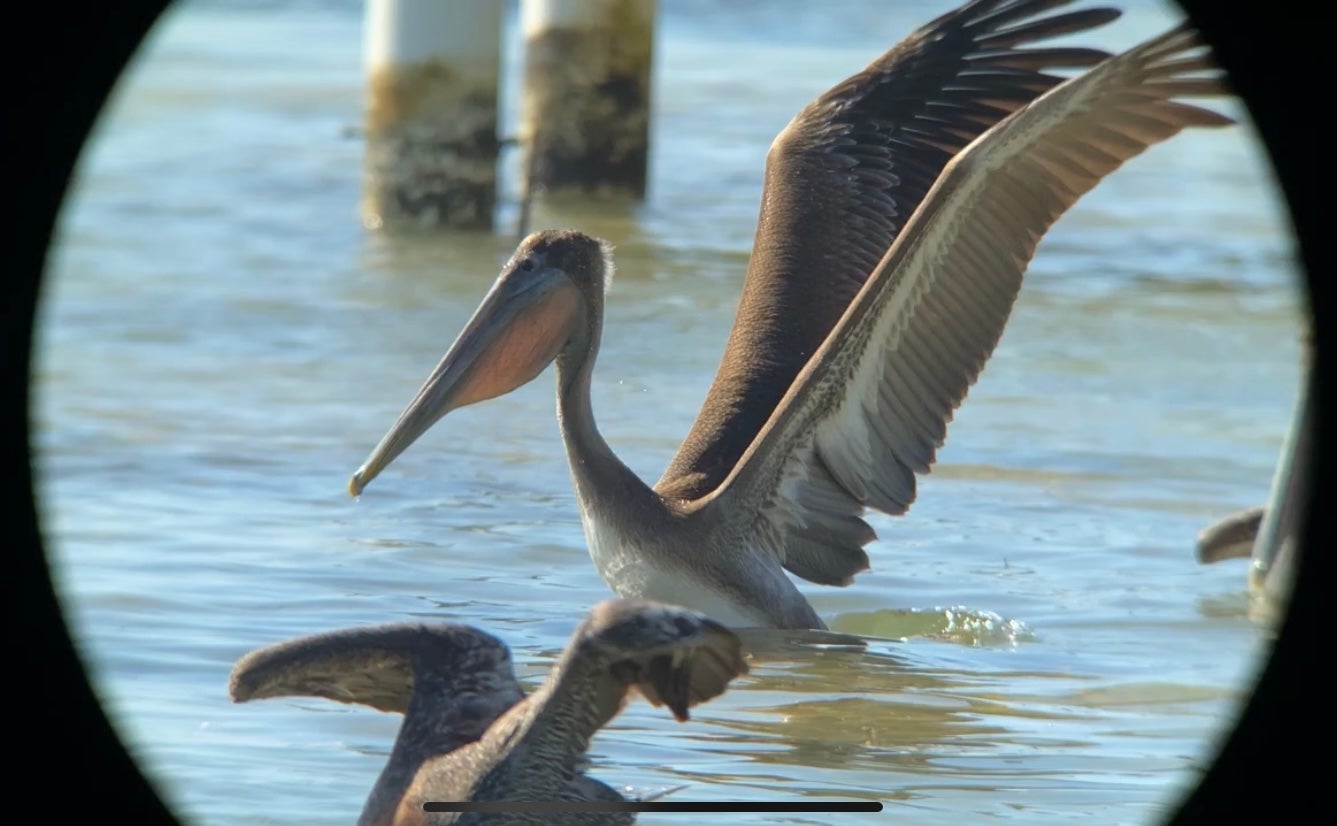
Some folks might have binoculars but no spotting scope. Are they interchangeable?
When I first started out I would use my phone, balance it up against my binoculars, and take a photo through them that way. [It] takes a little bit of skill and a little bit of practice, but you can do it. There are certain setups that are more affordable than others.
The setup that I’m currently using is a Maven scope with my phone scope case, and that is more of an expensive setup. That’s why the binoculars take so much skill, because you’re trying to balance [the phone’s lens] through the binoculars while also holding it still with your other hand. Having binoculars is great for spotting the animal, but as far as capturing a photo or a video of an animal, you’ve got to have a phone scope.
So, what’s the essential equipment you’d recommend for iPhone bird photography?
A tripod is absolutely essential. That is very important; it stabilizes the shot. If the animal is moving and you’re videoing, that allows for fluid movement. [If] you actually attach your phone to a scope, if it’s not attached to a surface it’s very shaky, so it’s really hard to capture a clear image. The more you zoom in, the shakier it’s going to be if you don’t have a tripod.
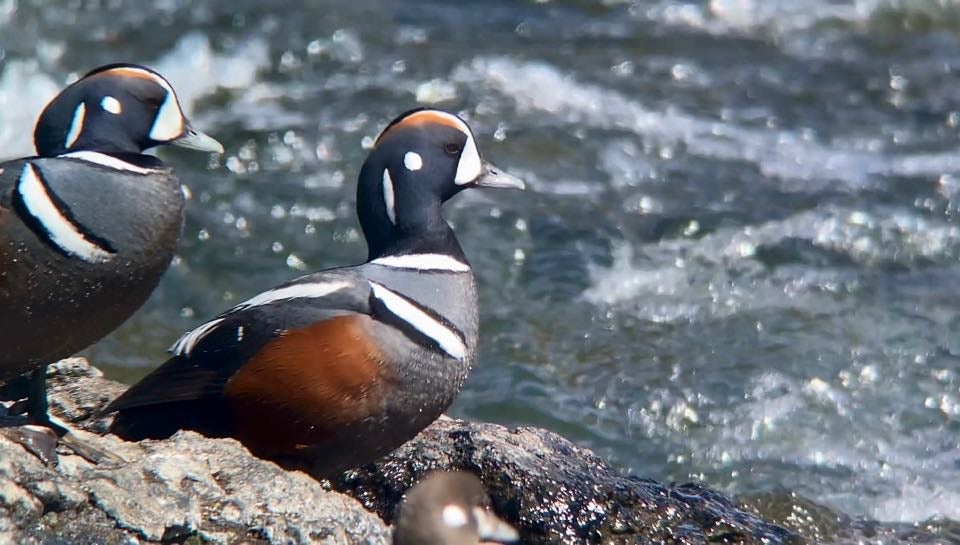
[Have a] case for your scope; oftentimes scopes will come with a case. Inevitably, when you’re out in the forest your scope’s going to hit branches. It might fall, so then you want a case to protect the scope, to protect the lens from getting scratched, [and] the mirrors inside from breaking. Bring a water bottle, bring binoculars. Binoculars can help you spot animals from a distance, and then you can set up the scope.
Scopes are great for looking at animals from a distance, but they’re not always super-functional as far as finding animals. Binoculars are better at finding the animal, and then the scope’s better at capturing imagery of that animal.
What’s the best place to find birds to photograph? Are there certain times of day that are better than others for iPhone bird photography?
Golden hour is the best time, obviously because the lighting is going to be the most beautiful. One thing that is great with birds is their activity level is highest during golden hour, oftentimes during those mornings. Birds are, we have a fancy word in science, called corpuscular. It means that animals are active in the mornings and evenings, versus nocturnal, [which means] active at night. Birds are going to be active early in the morning; they’re going to be singing. If you’re trying to get a shot of a really pretty bird, they’ll be singing at the top of a bush or a tree and won’t be moving around as much.
Those early morning hours can be a really good time to go look for birds, especially for the dawn chorus. You can get those birds singing before they move off and become harder to find. [At] first light, most species are pretty active.
They have increased activity when the sun begins to go down, but they’re not displaying as much. I think the mornings are better because they’re just more visible, a little more active.
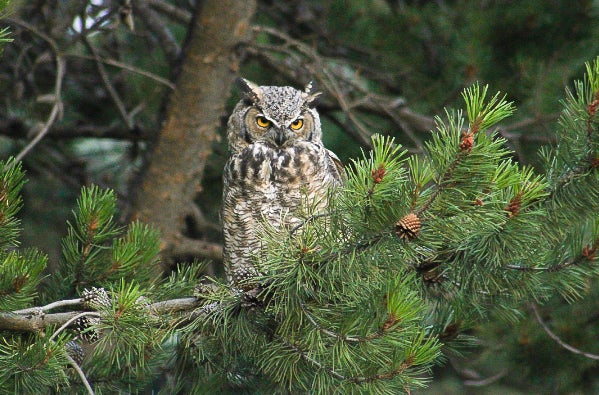
[To find birds], I’d go to community parks. A lot of places now have what’s called a natural area, which is like a community-preserved area of a park for wildlife and for recreation. You can always go online and look up your local state parks. [In the] West we have a lot of Forest Service land, so even if there’s not a national park or wilderness nearby you can always go to the National Forest to go looking for wildlife.
Everyone in their wildlife-watching journey starts somewhere. When I started out birdwatching, and still to this day, I go to community parks. Those are great, safe locations for people to start at. It can be intimidating, especially if you’re going on your own to go out into the forest by yourself. It’s better to work up to that. I travel all the time, and I am oftentimes birding in parking lots.
Do you have any tips for capturing birds in motion?
One thing that’s really cool with phones is you can film and take photos at the same time. If a bird is flying and it’s an action shot, I’ll use one hand to follow the bird in motion with the scope, and then my other hand snapping photos while my phone is videoing.
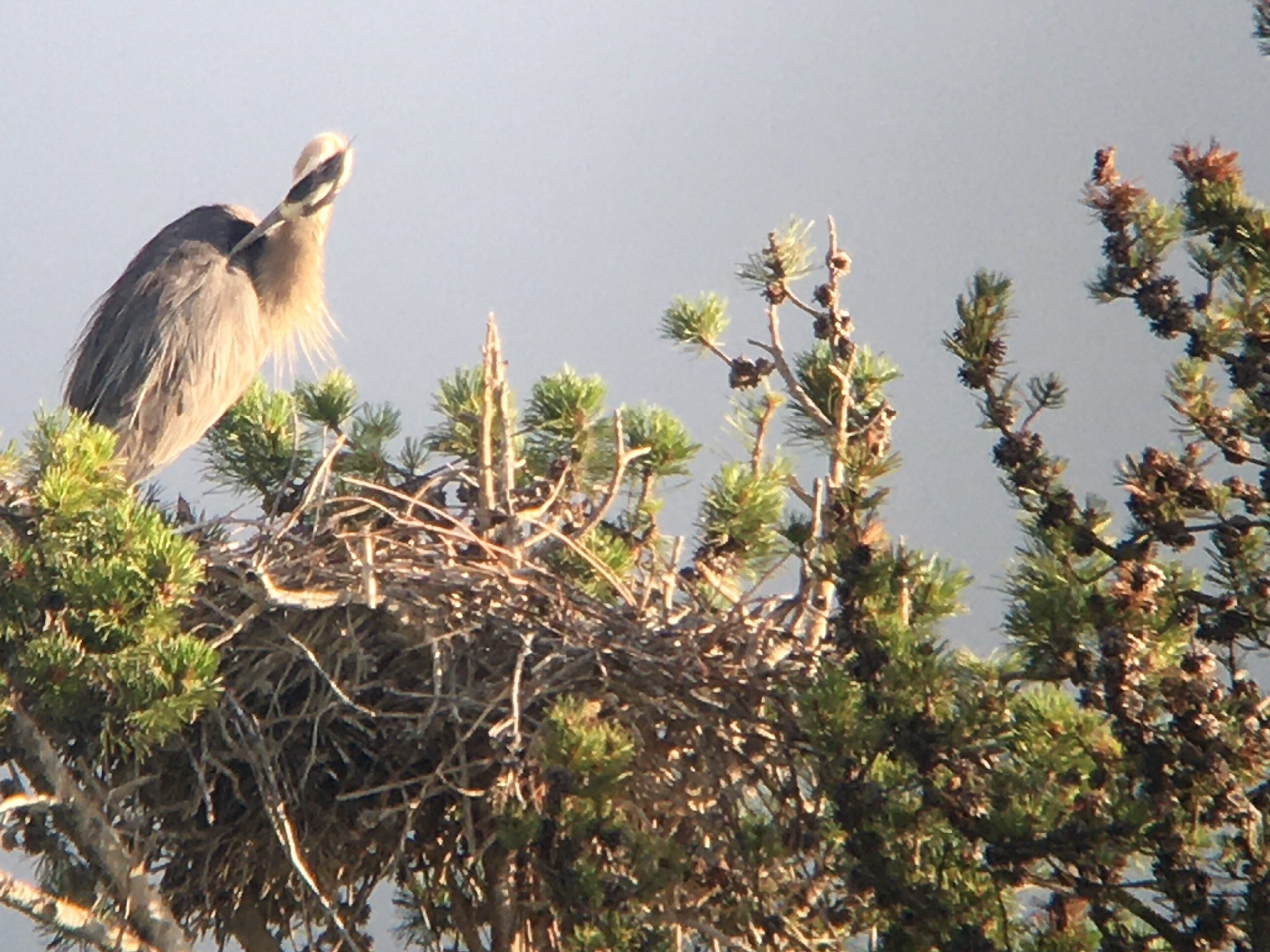
Identifying birds can be difficult for first-timers. What’s a good way to ID different species?
I use the Merlin Bird app, which I just have on my phone. You can download the region that you’re in and then it has photos of birds that occur in the region. It has pretty good information on their range, on their habitat, and has recordings of their songs and calls. The app is really great if you’re in an area that’s new or even if you’re new to birding. That’s a great way to learn. They also have a great way of breaking down what birds look like. When you get better at birding you learn the classification of birds, and that helps figure out what type of bird you’re looking at to later ID it. If you’re an international traveler, Birds of the World is good.
Finally, we know it’s important to respect the wildlife we’re observing. How can we be ethical while still getting an amazing shot? Are things like bird feeders or bird baths okay?
When we’re out on tour, we try to be as ethical as possible, [which means] observing a bird, or whatever animal we’re looking at without actually changing its behavior. We want to be observing its natural behavior. One thing that’s great about the scopes is you can actually view them from a pretty far distance. I have filmed wolves with the scope from two miles away.
I encourage people to attract birds to their yard and to attract nature to their yard. As far as the ethics of that, we want to make sure that we’re feeding the birds high-quality forage [and that] we’re not just giving them bleached seeds, or chemical-ridden seeds. We also want to make sure that we’re not attracting dangerous or controversial wildlife to our yards. If you’re in an area like Wyoming, you have to be really careful with bird feeders because of bears.
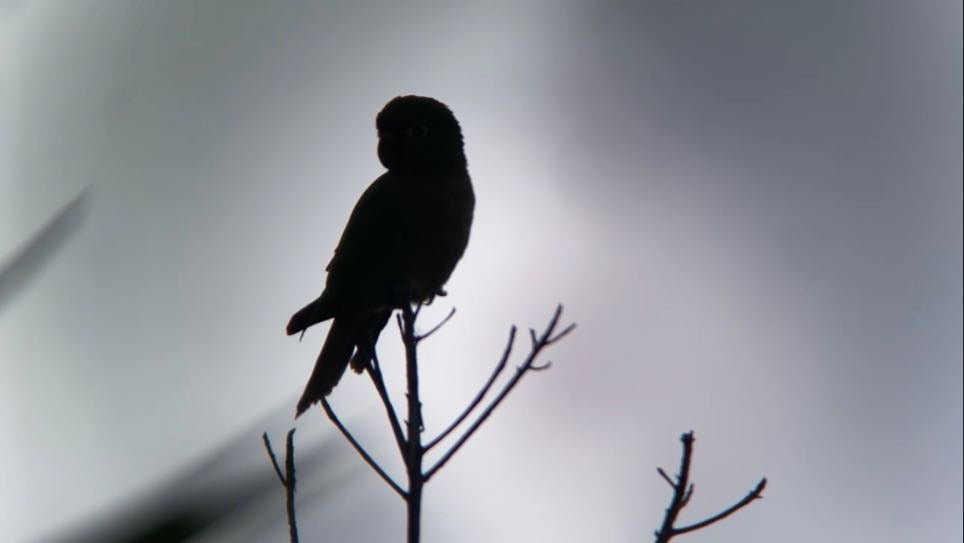
You could set up a blind—a barrier where the birds can’t see you but you can see them. It could be super simple, it could be like setting a bird feeder outside of your living room window and watching the bird from your living room window with the scope or the binoculars.
As far as ethics, it’s always important when you’re taking photos and videos of animals to be really careful with location tagging. I post a lot of photos of animals that I see on tour to my social media. I always tag it, if it’s in Jackson, Wyoming, “Keep Jackson wild,” and then the tag is “Downtown Jackson Hole,” even though that’s clearly not where I saw the animal. That’s just to say, “Yes, I saw it in Jackson Hole, but I’m not going to give you its exact location.”
We don’t want to disturb [the animals], we don’t want to chase animals off their nests. Even locally, for birds that are endangered, you want to be careful tagging those locations. Because then it can disturb your local wildlife and your local breeding birds.
The post iPhone bird photography: a beginners’ guide appeared first on Popular Photography.